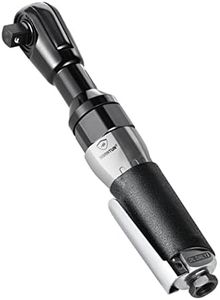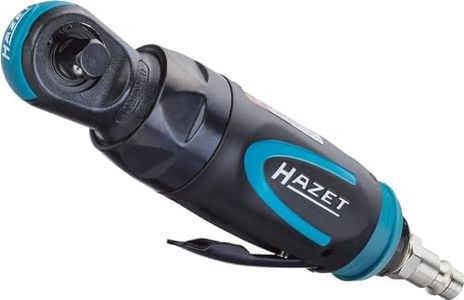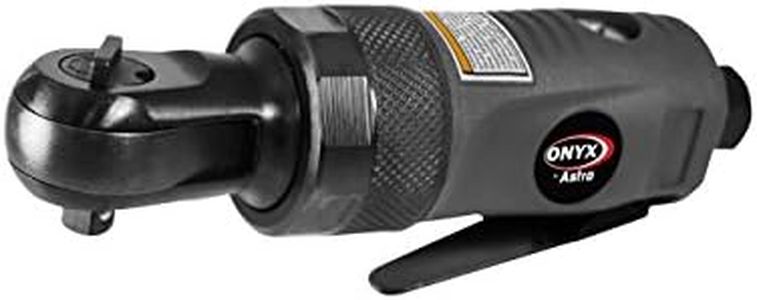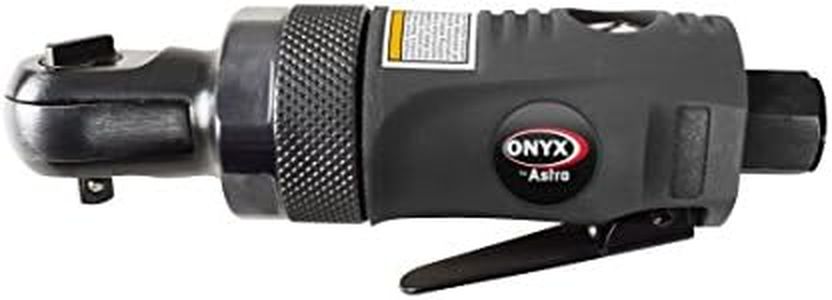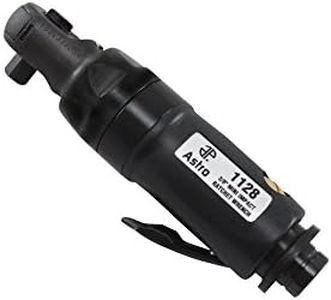We Use CookiesWe use cookies to enhance the security, performance,
functionality and for analytical and promotional activities. By continuing to browse this site you
are agreeing to our privacy policy
10 Best Air Ratchets
From leading brands and best sellers available on the web.Buying Guide for the Best Air Ratchets
When choosing an air ratchet, it's important to think about the kinds of tasks you expect to do most often. Air ratchets are handy tools for tightening or loosening bolts and nuts quickly, especially in places where a regular wrench might not fit. Understanding the key features of air ratchets will help you pick one that fits your tasks, whether you work on cars, bikes, machinery, or general home repairs.Drive SizeDrive size refers to the diameter of the square nub where the socket attaches. Common sizes are 1/4-inch, 3/8-inch, and 1/2-inch. The size matters because it determines what kinds of sockets you can use, and affects how much torque (turning power) the tool can safely handle. For light, precise work on smaller bolts, a 1/4-inch drive is best; it’s lighter and fits in tight spots. The 3/8-inch drive is the most popular for general use, balancing compact size and good torque. The 1/2-inch drive is suited for larger, tougher fasteners, as it allows more strength but can be bulkier. Think about the size of the bolts and nuts you work with most often to decide which drive size fits you.
Maximum TorqueMaximum torque is the highest rotational force the air ratchet can provide, measured in foot-pounds (ft-lb) or Newton meters (Nm). Higher torque means more power to loosen or tighten tough fasteners. Light-duty tasks like small engine work need lower torque — about 25 to 40 ft-lb is usually enough. Medium jobs, like general vehicle repairs, usually require around 45 to 70 ft-lb. For heavy, stubborn bolts, look for ratchets that provide 80 ft-lb or more. Match the torque to your typical jobs: too little and you’ll struggle, too much and you could break parts.
Speed (RPM)Speed, given in revolutions per minute (RPM), tells you how fast the ratchet turns. Higher speed means it can spin bolts faster, saving time when you have to remove or install several in a row. Lighter jobs often benefit from higher speeds (200-300 RPM), while heavier tasks may be safer at lower speeds (150-200 RPM) to have more control and avoid stripping threads. If you need to work quickly on lots of bolts, go for a faster tool—if precision is more important, a slower one is better.
Tool Size and WeightThe overall size and weight of the air ratchet affect how easy it is to handle, especially in tight or awkward spaces. Smaller, lighter ratchets are easier to maneuver and cause less fatigue during long jobs, but may provide less power. Larger, heavier models are more powerful but can be harder to use in cramped areas. Consider where you usually work and how much space you have to see which balance of size and power suits you.
Air ConsumptionAir consumption is how much compressed air the tool uses, usually measured in cubic feet per minute (CFM). This matters because your air compressor must keep up with the tool’s demand. Light-duty ratchets might use about 2-3 CFM, while heavy-duty models may use 4 CFM or more. Check your compressor’s rating and compare to the air ratchet’s requirement—if your compressor can’t keep up, the tool won’t work well.
Noise LevelNoise level, often measured in decibels (dB), tells you how loud the air ratchet is during use. Some tools are much noisier than others, which can be uncomfortable in a small garage or home workshop. Lower decibel ratings mean quieter operation. If you value a more peaceful work environment, or will be working in shared spaces, look for quieter options.





